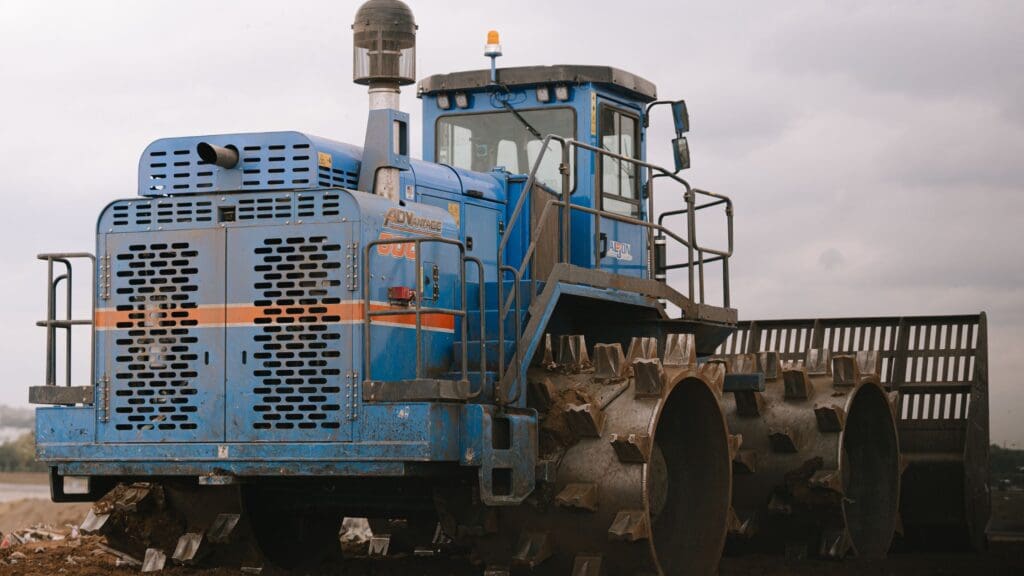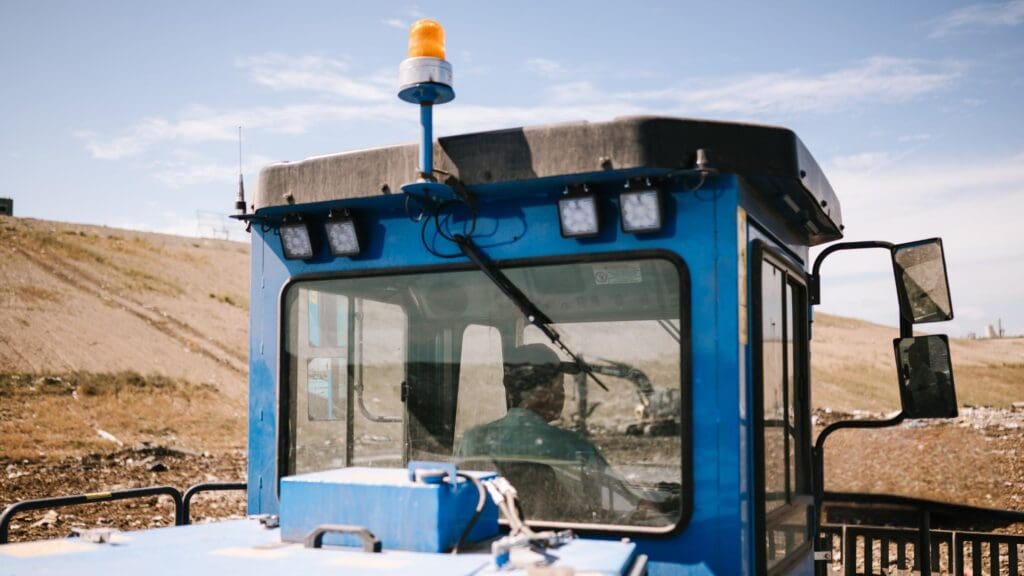Landfill compactors are big investments, even when used or refurbished. They’re also the cornerstone of an efficient landfill operation and one of the biggest determinants of longevity. Without one, compaction ratios will suffer, and the landfill will reach its maximum cell height far ahead of schedule. Given their importance and value, it’s vital to make purchases with your eyes open and put as much time as possible into research to make sure you find the best compactor for your operations. These five questions can save you time and money down the road – time well-spent, given how long the compactor will be working for your operation.
1. What do Experienced Landfill Operators Prioritize When Buying New Compactors?
To begin with, ask other operators and owners what they wished they knew before making big purchases. One surprising topic that comes up over and over among experienced operators is the importance of uptime to overall return on investment. Cost of ownership includes both the initial investment and the cost of maintenance, repairs and refurbishment, and unexpected downtime can dramatically increase those costs.
In addition to raising the operating cost of the machine itself, downtime puts incredible strain on the operation as a whole. Even if a compactor is down for a few days or a week for repairs, the stream of incoming waste still needs to be stored safely. A backup machine can be an organizational lifesaver in these situations, but it also costs money to own and maintain, and it’s usually a less effective compactor, either due to age or build. Temporarily reduced compaction ratios can eventually build up and cause long-term issues.
Worse, when a landfill doesn’t have a backup option, operators may turn to non-purpose-built machines such as dozers or track loaders. These pieces of equipment are designed to float smoothly over rough terrain, not sink down into it and compact it without getting stuck. As a result, depending on how long it takes to get the primary compactor up and running, a few days of downtime can turn into significant wasted airspace and major costs to the landfill as a whole over time. Regardless of the differentiators that make one machine seem more appealing than another (e.g. fuel efficiency, weight, or wheel design), uptime and reliability make the biggest differences to overall productivity.
2. What are the Costs of the Current Diesel Emissions Systems to the End User? Is There a Way to Minimize Them?
While they are vital to meeting regulations and reducing the impact of diesel fuel on the environment and working conditions of operators, filtration systems and regen requirements do increase the cost of ownership for large machinery. Because compactors often stop and start during operation, active regen may be required, adding to maintenance time and reducing productivity.
Replacing filters and maintaining systems to keep them in compliance all add to the time and financial costs of these systems. The easiest way to reduce those costs is to switch to an engine that integrates a selective catalytic reduction system, such as the Volvo Penta that powers Aljon compactors. These systems do not require DPF or regen, simplifying maintenance and reducing downtime.
3. What is the Typical Life Expectancy of a Landfill Compactor?
Compactors trawl through all kinds of unfriendly, abrasive material on a daily basis and are exposed to rain and other corrosive forces. After around 10,000 hours of operation, it’s more likely that systems will begin to fail and need replacement, even with good maintenance and abrasion-resistant wheel cleats. One rule of thumb is when repair costs approach half the cost of a new machine, it’s time to consider a replacement.
Compactor frames, on the other hand, can last much longer – up to 30,000 hours for Aljon compactors. One way to reduce overall ownership costs is to consider rebuilding rather than replacing your machine. Many companies offer partial rebuilds of the drive train or hydraulics, but the gold standard is an OEM (Original Equipment Manufacturer) Certified Rebuild Program.
Rather than having a third party rebuild part of the machine, Aljon’s Compactor Certified Remanufacturing program takes place in the factory where expert technicians completely dismantle the compactor down to the frame. Each part is cleaned, refurbished, repaired, or replaced and tested to ensure its longevity. Aljon certifies each rebuilt compactor with six months for the full machine and three years/6,000 hours for the power train. By extending the lifespan another 10,000+ hours, the overall cost of ownership is dramatically reduced.
4. Is New Technology, Such as a GPS-Powered Machine Guidance System, Worth Investing in Upfront?
Given that airspace is the most valuable asset of any landfill operation, it makes sense to pursue every possible improvement in compaction ratios, even if the upfront costs are high. Many are turning to new GPS systems that guide compaction routes, reducing the number of passes required to achieve the highest density. However, these systems incur additional installation, maintenance, and training costs to implement effectively, so they may not be right for every operation. Aljon compactors come pre-wired for GPS systems, so you don’t have to decide upfront – it’s possible to add one after the machine has been running for a few years to see if the compaction ratio gains are worth it for your operation.
5. What Kind of Manufacturing Conditions Should You Look For? How Long Have Aljon Products Been in Production?
All Aljon machines are built in a factory in Ottumwa, Iowa, where they’ve been built for 60 years. This has several advantages. Onshore manufacturing ensures that spare parts are available for overnight shipping when your machine needs repairs, and expert advice is readily available to solve problems. Aljon has a robust service and support department designed to get machines back up and running as quickly as possible with a high fill rate. Fill rate is the percentage of orders that can be filled with in-stock parts vs. being backordered, and Aljon spare parts has an average fill rate of 95% to reduce the amount of time spent waiting for replacement parts to arrive.
Big investments require serious thought and research. It’s always worth asking other operators what their main concerns are and considering add-on costs and benefits such as regen-less engines and GPS systems. Additionally, ensuring that the manufacturer offers time and cost-saving benefits such as rebuild programs and exceptional customer service will give you confidence that your operation is in good hands when it comes to your most important equipment.



